
COMPUTERS & FLUIDS
Scope & Guideline
Bridging Theory and Application in Fluid Dynamics Research
Introduction
Aims and Scopes
- Computational Fluid Dynamics (CFD):
The journal emphasizes the development and application of computational fluid dynamics techniques, including finite volume, finite element, and lattice Boltzmann methods, to solve complex fluid flow problems. - Multiphase Flow Simulation:
A significant focus is on the simulation of multiphase flows, including interactions between different fluid phases, which is crucial for applications in chemical engineering, environmental science, and biomedical engineering. - Turbulence Modeling:
The journal publishes research on turbulence modeling, including large-eddy simulation (LES) and Reynolds-averaged Navier-Stokes (RANS) approaches, to improve understanding and prediction of turbulent flows. - Fluid-Structure Interaction (FSI):
Research on fluid-structure interaction is a core area, highlighting the interplay between fluid dynamics and structural mechanics, essential for applications in aerospace, civil engineering, and biomechanics. - Data-Driven Approaches and Machine Learning:
The integration of machine learning and data-driven methods into fluid dynamics modeling and simulation is increasingly featured, showcasing innovative approaches to enhance traditional computational methods. - Numerical Method Development:
The journal focuses on the development of new numerical methods and algorithms, including high-order schemes, adaptive methods, and innovative boundary condition treatments for improved accuracy and efficiency.
Trending and Emerging
- Machine Learning and AI in Fluid Dynamics:
There is a growing trend toward incorporating machine learning and artificial intelligence techniques into fluid dynamics research, enabling enhanced predictive capabilities and optimization of fluid flow simulations. - High-Performance Computing (HPC) Applications:
The use of high-performance computing resources to tackle large-scale fluid dynamics problems is increasingly prevalent, with many papers focusing on parallelization techniques and efficient algorithm implementations. - Hybrid Numerical Methods:
Emerging interest in hybrid numerical methods that combine different computational techniques, such as coupling Lattice Boltzmann methods with traditional CFD approaches, is becoming more common. - Environmental and Biological Flows:
Research on environmental fluid dynamics and biological flows is trending, including studies on pollutant dispersion, biofluid mechanics, and the impact of fluid dynamics on ecological systems. - Multiscale and Multiphysics Modeling:
There is a noticeable increase in publications focusing on multiscale and multiphysics modeling, where researchers address complex interactions between fluid dynamics and other physical phenomena.
Declining or Waning
- Classical Analytical Solutions:
There has been a noticeable decline in papers focusing solely on classical analytical solutions to fluid dynamics problems, as the emphasis shifts toward numerical simulations and complex computational models. - Simplistic Turbulence Models:
Traditional turbulence models, such as the basic k-epsilon model, are being overshadowed by more sophisticated approaches like LES and hybrid RANS-LES methods, which offer improved accuracy in turbulent flow predictions. - Experimental Validation Studies:
While experimental validation remains important, the frequency of publications focusing solely on experimental studies without computational analysis has decreased, as more researchers seek to combine computational and experimental methods.
Similar Journals
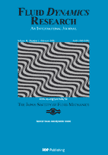
FLUID DYNAMICS RESEARCH
Pioneering Discoveries in Fluid Flow and Transfer ProcessesFLUID DYNAMICS RESEARCH, published by IOP Publishing Ltd, is a pivotal journal dedicated to advancing the understanding of fluid dynamics through interdisciplinary research that spans several domains including mechanical engineering and physics. With an ISSN of 0169-5983 and E-ISSN 1873-7005, this journal provides a vital platform for researchers aiming to disseminate new findings and theoretical advancements in fluid flow and transfer processes. As of 2023, FLUID DYNAMICS RESEARCH holds a commendable position within the academic community, ranked Q3 in fluid flow and transfer processes, mechanical engineering, and miscellaneous physics and astronomy categories. The journal showcases a diverse array of articles that not only inspire collaboration among professionals and students but also ensure that theoretical and experimental studies are accessible for further development in the field. Operating from the United Kingdom, the journal offers a unique opportunity for scholars worldwide to contribute to the vibrant community dedicated to understanding the complexities of fluid dynamics, even as it anticipates converging its years of research from 1986 to 2024.
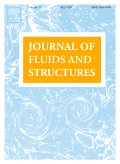
JOURNAL OF FLUIDS AND STRUCTURES
Innovative Insights into Fluid Dynamics and Structural MechanicsJournal of Fluids and Structures, published by Academic Press Ltd - Elsevier Science Ltd, is a premier international journal dedicated to the interdisciplinary field of fluid-structure interactions. With an impressive impact factor and ranking in the Q1 category for Mechanical Engineering and a Scopus ranking of #119 out of 672, this journal serves as a vital resource for researchers, professionals, and students alike. Since its inception in 1987, it has consistently delivered cutting-edge research and comprehensive reviews that contribute significantly to the understanding of fluid dynamics and structural mechanics. The journal emphasizes innovative methodologies and advances in the analysis of complex interactions between fluids and structures, making it essential for those at the forefront of engineering and applied physics. Additionally, with converged years from 1987 to 2024, the journal has maintained a commitment to fostering academic discourse and presenting groundbreaking research that shapes the future of the field.
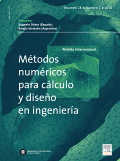
Revista Internacional de Metodos Numericos para Calculo y Diseno en Ingenieria
Elevating Engineering Design through Open Access ResearchRevista Internacional de Metodos Numericos para Calculo y Diseno en Ingenieria is a prominent academic journal dedicated to the dissemination of innovative research and methodologies in the fields of applied mathematics and engineering. Published by SCIPEDIA S L in Spain, this journal has been an essential resource for researchers since its inception in 1987, transitioning to an Open Access model in 2016 to enhance accessibility and foster collaboration among professionals and academics globally. Currently indexed in Scopus, it holds a Q4 category designation in both applied mathematics and miscellaneous engineering fields for 2023, reflecting its focus on advancing numerical methods to solve engineering problems. Despite ranking at the lower percentile, it serves as a vital platform for emerging scholars and practitioners aiming to contribute to cutting-edge developments in numerical techniques and engineering design. The journal's commitment to providing a forum for new ideas makes it an invaluable asset for students, researchers, and industry professionals seeking to stay abreast of advancements in the discipline.
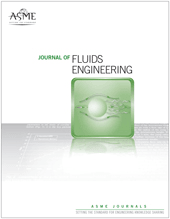
JOURNAL OF FLUIDS ENGINEERING-TRANSACTIONS OF THE ASME
Exploring the Depths of Fluid DynamicsJOURNAL OF FLUIDS ENGINEERING-TRANSACTIONS OF THE ASME, published by the renowned American Society of Mechanical Engineers (ASME), stands as a pivotal platform for disseminating cutting-edge research in the field of mechanical engineering, specifically focusing on fluid mechanics and its diverse applications. With an established history dating back to 1897, this journal features research that pushes the boundaries of knowledge and technology in areas such as fluid dynamics, thermal engineering, and hydrodynamics. Although it is not an open-access journal, it maintains rigorous peer-review standards, ensuring the publication of high-quality scholarly articles that contribute to the academic and professional community. In the latest rankings, it holds a respectable position within the Q2 category of mechanical engineering journals, reflecting its significant impact, as evidenced by its Scopus rank of #204 out of 672, placing it in the 69th percentile. Researchers, professionals, and students alike will find this journal to be a vital resource for the latest developments and innovative insights in fluids engineering.
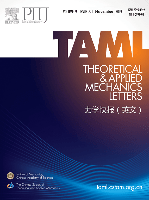
Theoretical and Applied Mechanics Letters
Unlocking the Future of Mechanics with Open Access ResearchTheoretical and Applied Mechanics Letters, published by ELSEVIER, stands as a premier journal in the field of engineering and applied mechanics, recognized for its rigorous peer-reviewed articles that advance theoretical and practical frameworks. With an impressive open access policy established in 2015, the journal enhances global accessibility to cutting-edge research across a range of disciplines including Aerospace, Civil, Mechanical, and Biomedical Engineering, along with Computational Mechanics and Ocean Engineering. The journal boasts an enviable position in the academic landscape, achieving a Q1 rank in several categories as of 2023, while being cited among the top percentiles in Scopus Ranks, specifically ranking #25 in Aerospace Engineering and #15 in Computational Mechanics. The journal aims to foster innovation by providing a platform for scholars and professionals to disseminate their findings, thereby bridging the gap between theoretical research and practical applications. By promoting a diverse range of topics and methodologies, Theoretical and Applied Mechanics Letters not only contributes to the advancement of engineering disciplines but also supports the global academic community in exploring sustainable and impactful engineering solutions.
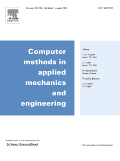
COMPUTER METHODS IN APPLIED MECHANICS AND ENGINEERING
Elevating Knowledge in Computational Methods and Mechanical Engineering.COMPUTER METHODS IN APPLIED MECHANICS AND ENGINEERING, published by Elsevier Science SA, is a premier journal that has significantly contributed to the fields of computational mechanics, computer science applications, mechanical engineering, and the mechanics of materials since its inception in 1972. With an ISSN of 0045-7825 and an E-ISSN of 1879-2138, this journal is recognized for its rigorous peer-review process and is consistently ranked in the Q1 quartile across multiple categories, including Computational Mechanics and Mechanical Engineering. Its impressive Scopus rankings place it in the top tiers of its field, with a percentile ranking of 98th in Computational Mechanics. Researchers, professionals, and students will find the journal's comprehensive scope and high-quality articles invaluable for advancing their knowledge and practices at the intersection of engineering and computation. Although not an open-access journal, its impactful contributions to both theoretical and applied research make it an essential resource for anyone involved in these dynamic fields.
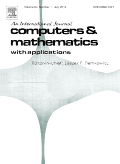
COMPUTERS & MATHEMATICS WITH APPLICATIONS
Innovating Tomorrow's Solutions through Computational ResearchCOMPUTERS & MATHEMATICS WITH APPLICATIONS is a prestigious academic journal published by PERGAMON-ELSEVIER SCIENCE LTD, focusing on the intersection of computational mathematics and applicable computational methodologies. With a robust history spanning from 1975 to 2024, the journal proudly ranks in the top quartiles for its categories—achieving Q2 in Computational Mathematics and Q1 in both Computational Theory and Mathematics, and Modeling and Simulation for the year 2023. It holds an impressive position in the Scopus Ranks, being placed in the 79th percentile for Computational Mathematics and 78th percentile for both Modeling and Simulation and Computational Theory and Mathematics. Although it does not currently offer Open Access, the journal remains a pivotal resource for researchers, professionals, and students seeking cutting-edge research and developments in computational applications. Its significance in the field is underscored by its commitment to publishing high-quality, peer-reviewed articles that push the boundaries of knowledge and innovation, supporting the academic community's strides towards solving real-world problems through mathematics and computation.

International Journal of Computational Methods
Advancing computational frontiers in science and engineering.The International Journal of Computational Methods is a premier academic journal dedicated to advancing the field of computational mathematics and its applications in various domains of computer science. Published by WORLD SCIENTIFIC PUBL CO PTE LTD, this journal serves as a critical platform for researchers and practitioners to disseminate innovative computational techniques and methodologies that address complex problems in science and engineering. With a significant focus on fostering interdisciplinary collaboration, the journal is essential for those looking to explore cutting-edge topics in computational methods. Established in 2006 and spanning until 2024, it holds respectable rankings in Q3 for Computational Mathematics and Q2 for Miscellaneous Computer Science as of 2023, reflecting its growing impact in the academic community. Although the journal is not currently open access, it offers various subscription options to enable access to its high-quality research articles. By bridging theoretical advancements and practical implementations, the International Journal of Computational Methods plays a vital role in shaping future innovations within both academic and industrial settings.

Computational Particle Mechanics
Advancing the Frontiers of Computational MechanicsComputational Particle Mechanics, published by SPRINGER INTERNATIONAL PUBLISHING AG, is a leading journal dedicated to advancing knowledge in the interdisciplinary fields of computational mechanics, civil engineering, and fluid dynamics. With an impressive impact factor reflecting its high-quality research publications, this journal maintains a strong presence in the academic community with a Q1 ranking in categories such as Civil and Structural Engineering, Computational Mechanics, and Numerical Analysis as per the latest 2023 evaluations. Researchers and professionals benefit from the journal's commitment to open-access options, promoting wider dissemination of groundbreaking studies. Operating under the Swiss publishing house since 2014, Computational Particle Mechanics aims to foster innovation through the exploration of particle-based methods and simulations, making significant contributions to methodologies within computational mathematics and modeling. As the journal continues to evolve until its converged years end in 2024, it stands as a vital resource for those looking to enhance their expertise in dynamic modeling and simulation techniques.

Journal of Mathematical Fluid Mechanics
Advancing Knowledge at the Intersection of Mathematics and Fluid MechanicsThe Journal of Mathematical Fluid Mechanics, published by SPRINGER BASEL AG, is a prestigious academic journal dedicated to the study of fluid dynamics through the lens of mathematics. With its ISSN 1422-6928 and E-ISSN 1422-6952, this journal has firmly established itself in the academic community since its inception in 2004, converging knowledge across various mathematical disciplines until 2024. Recognized in the top Q1 quartile rankings for Applied Mathematics, Computational Mathematics, Condensed Matter Physics, and Mathematical Physics as of 2023, it reflects a strong commitment to high-quality research and innovation. The journal features a variety of research articles, reviews, and theoretical frameworks, serving as an essential resource for researchers, professionals, and students eager to explore the mathematical principles underlying fluid mechanics. While it does not offer open access, the impact of its contributions resonates within interdisciplinary fields, advancing both theoretical insights and practical applications.